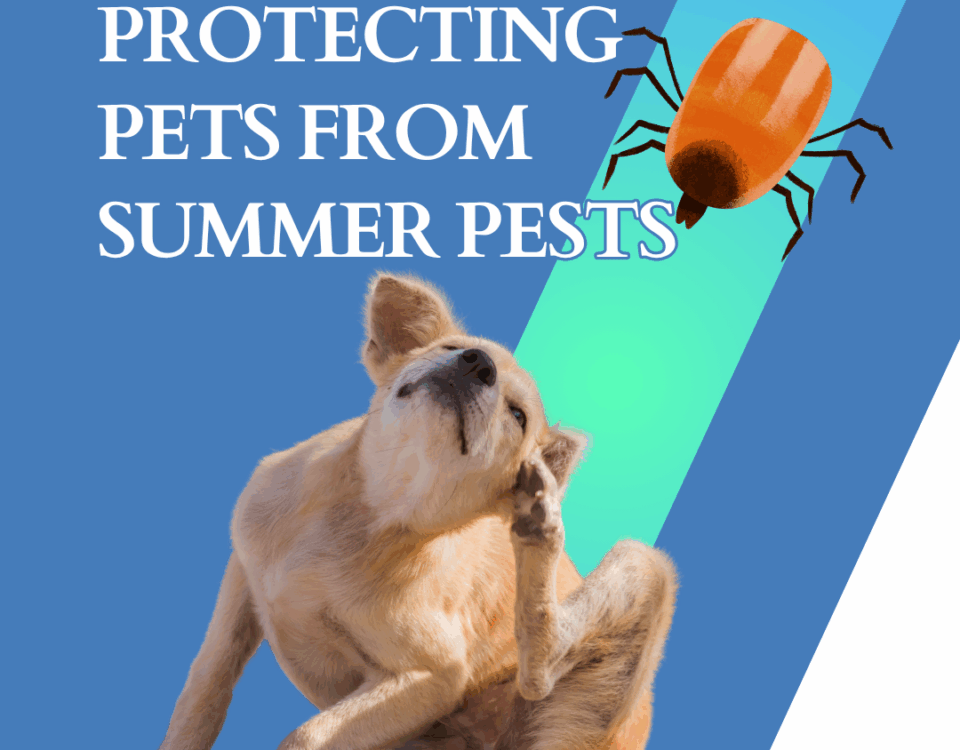Who Says You Can’t Train a Cat? – Training Your Cat to Come on When you Call
September 22, 2015Pet Fire Safety Check – How Does Your Home Compare?
September 29, 2015So now that Spring has sprung (YAY!), pet owners across the nation may find themselves dealing with more than foul weather and slick roads. The warmth of the sun and the extended daylight becons the emergence of dormant wildlife from their cozy winter dens. Perhaps none is so dreaded than those with tell-tale black and white markings and unmistakeable scent – the skunk.
Mojo and the Fog of Eternal Stench
I know a Great Pyranees named Mojo that has a particular fondness for wildlife. He can often be seen roaming the farm fields and woods edge in search of something to make friends with (or harass) whether it be a herd of deer or a plump groundhog basking too far away from his hole. Unfortunately for his family he doesn’t discriminate – he’s happy to greet anything he comes across, even the local skunks. I often wonder if he likes the smell or if his gentle, fun-seeking nature just makes him keep trying to get aquainted with them. Regardless of his motives, it seems as if he constantly reeks of his overnight encounters, much to the dismay of his family. My guess is he’ll never learn or accept that the fascinating striped “cats” don’t want to be his friend, and the noxious perfume is supposed to be a hint.
Mojo has inspired this blog entry. Everyday pet owners wake up, let the dog out and go about their daily routine, but a select few are greeted by more than their happy dog when he comes back in from his morning business. A freshly skunk scented pet is an excellent way to begin a ruined day. If you’ve ever experienced it, you know what I mean, and for those of you who haven’t – pray that it never happens to you. By the time you realize what’s happened, your eyes are watering, you don’t want to breathe, and the smell seems to permeate everything! So, what next?
A Lesson in Skunk Chemistry
Skunk musk is so powerful it can make you dizzy or bring on a strong feeling of nausea. The musk is a means of defense. Each skunk has two glands, one on each side of the anus. Muscles next to the glands allow the skunks to spray the fluid accurately at a potential threat up to 16 feet away! The Spray is not the skunk’s first means of defense, in fact they try not to use the spray, depending on their warning colors and postures to deter a threat first. They only produce enough fluid for about five or six sprays. Once depleted, it can take over a week for the fluid to be replenished. Fortunately for the skunk, most predators are deterred by the initial barrage. The fluid doesn’t just stink, it can cause temporary blindness, vomiting, and the scent can linger for miles around! Most natural predators know better and don’t bother skunks they encounter.
Chemists have studied skunk musk for years (I DO NOT envy them). What makes that stuff so effective!? The distinctive odor is somewhere between a concentrated dose of sulphury rotten eggs and a mountain of burning rubber. The spray is composed of seven distinctive compounds and “thiols”created by decomposing proteins. It is speculated that the smell has evolved to resemble the scent of decay that animals naturally tend to avoid. The 2 most potent compounds are butene-1-thiol and methyl-1-butanethiol. Complexities aside it’s easy to understand why it makes an effective deterrent.
Dealing with Eau du Skunk
If early childhood memories serve me, tomato juice, tomato sauce, or whole tomatos were the go-to remedy for a skunk sprayed pet. Others included vanilla, vinegar, orange juice, or even mouthwash! Unfortunately, none of these really pack the punch necessary to remove the musk, though some amy do a mediocre job masking the sharpness of the smell. The odor can linger for months and may become more apparent in rainy or damp weather. Your senses may adjust to the smell somewhat, so it may not seem as pungent.
In order to have a real impact on the odor, a wash has to be able to break down the thiols in the skunk oil. In 1993 a chemist named Paul Krebaum formulated what is waidely viewed and praised as a miracle skunk odor remedy. Mix 1 quart of 3% hydrogen peroxide, 1/4 cup of baking soda, and 1 teaspoon of liquid soap; use the mixture immediately on your pet, following with a generous rinse of warm tap water. VOILA! Simple but effective. These days there are also several reliable, commercially available products that can safely remove or neutralize the odor from your pet.
It is important to keep several things in mind if you should be faced with this issue. The faster you can clean the dog the better…the longer the musk oil lays on the skin and coat, the harder it may be to remove and the more you and your pet will suffer the smell. Above all keep your pet’s well-being in mind. Look over his body and face to check for scratches and bites that may need to be addressed or require veterinary attention. Also, before using any home remedy consider your dog’s skin and coat type – some home remedy ingredients may irritate a pets sensitive skin or discolor his coat. If it’s a concern, call your vet for advice on a reliable solution.
Don’t Blame the Skunk
Foul smelling odor aside, skunks aren’t all bad. Yes, they have a reputation for being vectors of rabies like other wild animals, and yes, they can create a mess by foraging for food in gardens, trash cans, or other places they associate with food (resourceful little guys!). But generally, skunks just want to be left alone. They have poor eyesight and a typically shy disposition. Spraying is usually a last resort – an effective defense if their bold color, hissing, stomping, and defensive stance doesn’t do the job. Some people even keep domesticated skunks as household pets (scent gland removed, my grandmother had one years ago named Flower), but thats a whole other blog!



